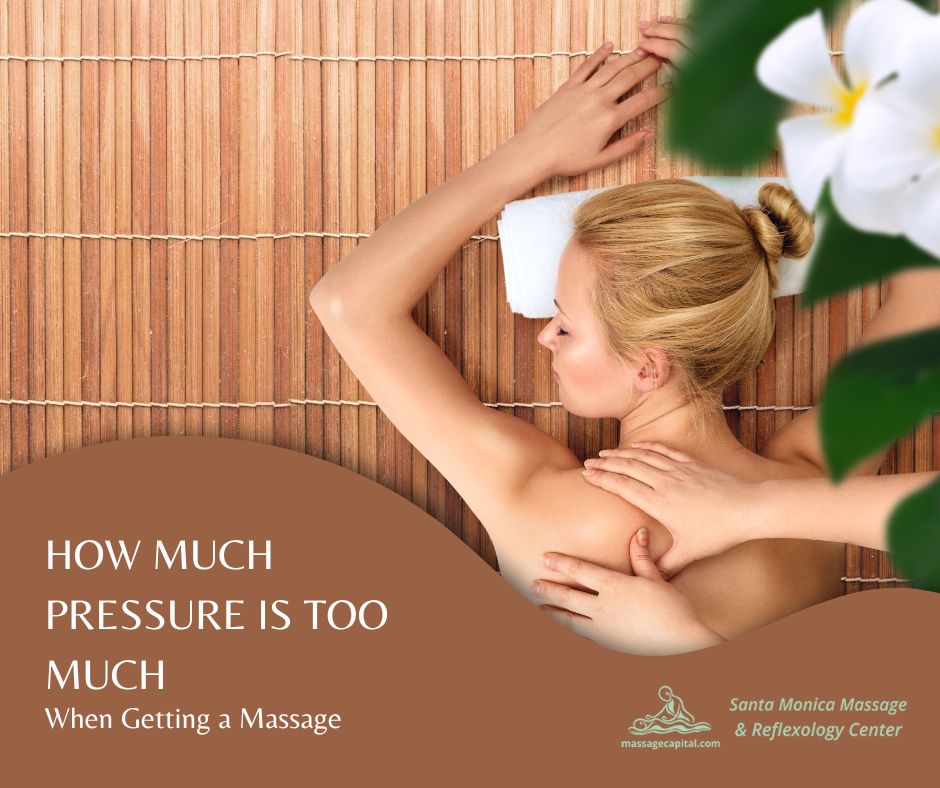Massage therapy in Santa Monica involves having pressure applied to problem areas in your body, but is there such a thing as too much pressure?
The short answer is yes. Depending on how tight your muscles are and how much pain you can handle, the amount of pressure a massage needs varies not only by person but also by session. It’s important to know how much pressure is required because it can make all the difference between a good and a bad massage!
Let’s talk a little more about pressure.
The Importance of Pressure
When our muscle tissue is contracted, which happens for a variety of reasons, including improper exercise techniques, bad posture, and overexertion, it becomes tight and compressed. Your muscles might feel rock hard underneath the skin and might even spasm. To help loosen it again, you need to apply pressure so it releases all that pent-up tension in your muscles, ligaments, nerves, and tendons.
Massages also promote blood circulation in the body. When you apply pressure to certain areas of your body, you direct blood flow to them, delivering much-needed oxygen, nutrients, and lymph circulation that will help the muscles heal. As the muscles loosen up, they get rid of waste and harmful fluids, reducing pain and swelling in your muscles.
Good Pressure vs. Bad Pressure
Now that we’ve established the importance of pressure in a massage, it’s time to differentiate between good pressure and bad pressure.
Good pressure is the kind of pressure that makes you feel relaxed and soothed. When your massage therapist applies the right amount of pressure, you should feel your muscles start to loosen up. It might be a little uncomfortable at first, but you’ll feel instant and immediate relief that will leave you wanting more.
Bad pressure, on the other hand, is the kind of pressure that leaves you with a sense of dread. Rather than anticipating relief, you anticipate pain which, in turn, makes the session less relaxing. When too much pressure is applied, your muscles take an additional beating that can lead to more bruises, nerve damage, and trauma. This pain can last days after your massage, and neither you nor your massage therapist would certainly want that.
How Much Pressure is Too Much?
At the end of the day, how much pressure we need for our body is totally dependent on you. Everybody’s got different pain thresholds, and while our massage therapists are certainly skillful, they aren’t mind readers! It’s important to communicate with them before and during the massage so they can make sure they’re giving you a painless and effective massage.
Please don’t be shy about your needs, and please don’t be ashamed of having a lower or higher pain threshold. Everybody is different, and we’re more than happy to adjust for you. We just want you to have a great experience!
So, how do you know if the pressure is too little, too much, or just right? By feeling. If you feel like your therapist can dig a little deeper, or if you feel yourself flinching away, then make sure to let the therapist know. This is especially important as we have different pain thresholds in our bodies as well—our legs, for example, might be able to handle a beating while our backs can’t.
In some cases, you might like the pain, just not all in one go. When this happens, make sure to let your massage therapist know, too, so you can take breaks as necessary. Take deep breaths and loosen your muscles to prepare for the next round of massage therapy.
Conclusion
Santa Monica massage has numerous health benefits. It helps heal sore muscles, promote blood and lymph circulation, reduce stress and tension, and plenty others, but this can only happen if the right amount of pressure is applied. This is why it’s important to know what you need and let your massage therapist know what you need so you can have a personalized experience that works.

